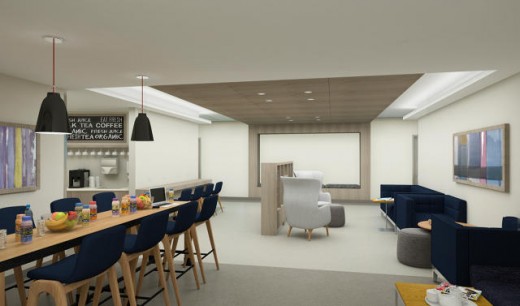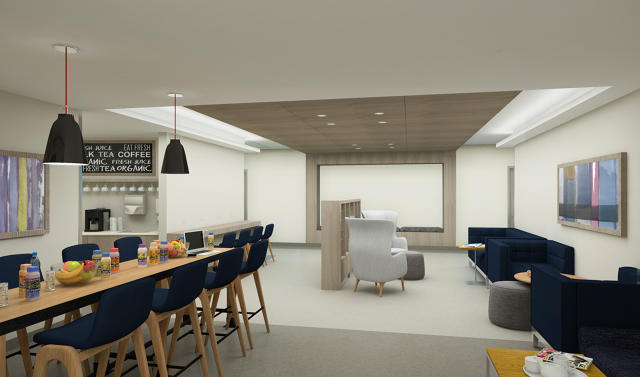Reinventing most cancers surgical procedure–by means of Designing a better health facility expertise
Memorial Sloan Kettering’s new $300 million cancer heart specializes in the well-being of the patient—at the same time as they transfer you in the course of the course of as fast as that you can imagine.
December 3, 2015
image a health center: bright lights, buzzing machines, crowded ready rooms, and frazzled nurses. nervousness runs high. customer support just isn’t high on individuals’s minds. they’re busy making sufferers wholesome and filling out required bureaucracy.
If all goes well, none of with the intention to be true at Memorial Sloan Kettering most cancers centers’s new $300 million surgical treatment constructing, slated to open in ny in January.
within the virtually finished Josie Robertson surgery heart (JRSC), the ready room feels more like a elaborate co-working space for families to camp out, play games, get work accomplished, and snatch a chunk to consume. The affected person rooms—all private, with personal bathrooms—have flooring-to-ceiling windows; the floors have distinctive artwork and poetry, relevant gathering places for a buffet breakfast and socializing; the determine-eight hallways double as strolling paths for submit-surgical procedure train. Even the 550-particular person team of workers will get a well-notion out area that goes far beyond the standard medical institution cafeteria. If most cancers wasn’t concerned, it’s a spot you want to imagine looking to hang around.
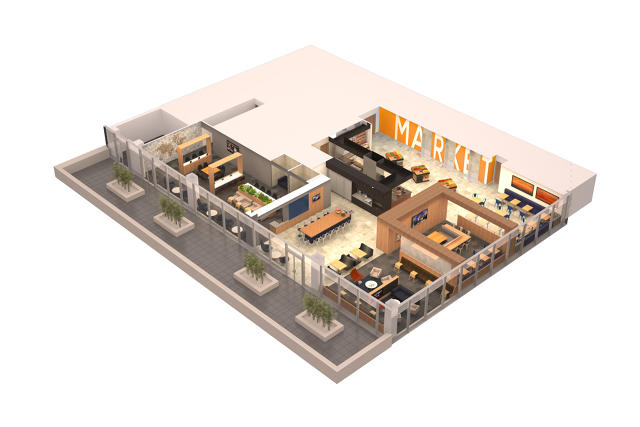
but what’s most attention-grabbing is that JRSC isn’t a boutique health center simply looking to cater to the rich. it’ll be the primary outpatient surgical operation middle that takes on some forms of advanced most cancers surgeries—say a double mastectomy and a breast reconstruction—and then sends patients residence inside a day. Its amenities and design are a important a part of its operate: to alleviate nerves, re-envision how workforce manages care, and have patients and their caregivers be ok with the short turnaround.
At a general degree, JRSC is being built to satisfy rising surgical demand: Memorial Sloan Kettering’s primary campus neighborhood had run out of operating room area, and the circumstances that wanted to be moved out had been extra difficult than what would be conventional for outpatient surgical treatment.
“There’s nothing else like this that I’ve ever heard of,” says Brett Simon, an anesthesiologist and the ability’s director. “most often, you go to an ambulatory surgical treatment center and you have got a biopsy or a knee arthroscopy. right here, we needed to maneuver out actual severe most cancers care.” (through legislation, ambulatory centers can’t preserve patients a couple of middle of the night.)
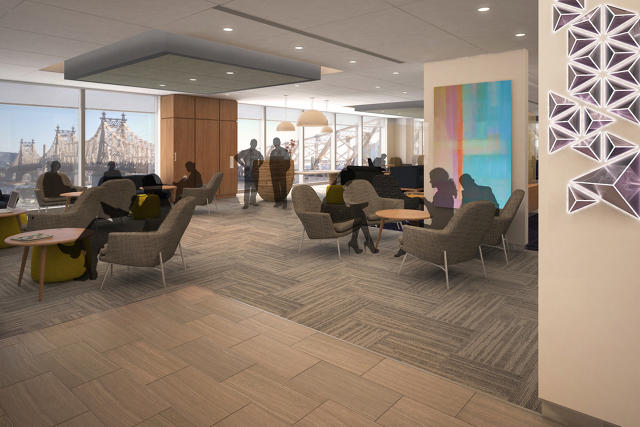
different health care traits might also assist provide an explanation for JRSC’s distinctive, affected person-friendly setup. The health center, a nationally leading cancer heart, is dealing with more competitors, as many hospitals construct fancy amenities to draw industry from getting older baby boomers. And within the Obamacare technology, both affected person satisfaction and cost effectivity are important metrics for insurance repayment. So a one-night time stay will obviously cost lower than two, particularly if a affected person leaves without feeling rushed. “whereas it might no longer be that arduous, medically, to get any individual out the door, having them emotionally and spiritually chuffed and feeling supported is in reality an immense deal,” says Simon.
To assist, the clinic employed the architecture firm Perkins Eastman and ICRAVE, an design and innovation agency that started out creating nightclubs and restaurants but now works in numerous sectors, together with larger training and airports. one of its latest initiatives was JFK LaGuardia airport’s Delta Terminals, where passengers now order ingredients from iPads at their gate without a issues about missing flight bulletins.

Memorial Sloan Kettering
“We realized used to be that we weren’t designing for a truly cool meals experience, we had been designing for people’s anxiousness,” says Lionel Ohayon, ICRAVE co-founder and CEO.
They took that very same thought to JRSC, the place they realized from patients, staff, and households that probably the most biggest anxieties for cancer patients used to be they felt that they had misplaced regulate of their lives and their well being. realizing the health facility needed to do issues otherwise, one giant intention become to use design and operational modifications to show that around.

sparsely designed “care pathways” will make sure a patient doesn’t, as Ohayon puts it, “convey up on the sanatorium to have a hysterectomy and in finding out she’s going home the next day.” A cellular app might ship the affected person notifications prior to surgery, reminding them to finish a guidelines of guidance steps. proper after surgical procedure, bedside tablets will allow patients to Skype with their physician, and when they go home, they’ll be able to securely textual content questions and ship photographs, as well as score their ache and ultimate signs day-to-day.
the encompassing setting will even make contributions to the patient’s feel of safety: “privacy, dignity, an infection keep an eye on, and expansive use of pure gentle and sensational views are deliberate in stimulating the patient for one of the best imaginable outcomes and to get them house as quickly as that you can imagine,” says Jeff brand nationwide healthcare practice space leader at Perkins Eastman.
at the health facility, JRSC can even do verbal exchange very in a different way. everyone within the health facility—doctors, group of workers, and most significantly, patients, and their domestic—will put on a real-time place badges, which, says Ohayon, “adjustments the entire notion of what a medical institution serves to do.” that suggests no irritating overhead pagers and numerous radical modifications from a traditional clinic operates. When a patient arrives, reasonably than stand in line at a massive desk, they can relax and any person will in my view greet them at their seat. households can observe on an important board where their friend is in the hospital, understanding exactly when surgical procedure starts, when it’s over, and once they’re ready for visitors.
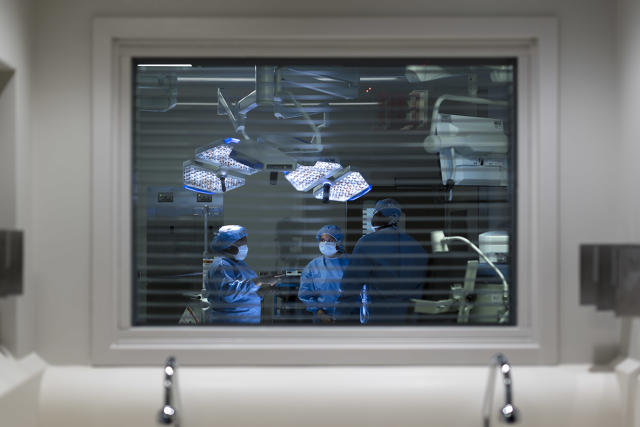
Memorial Sloan Kettering
The hospital will have to also operate more smoothly: Orderlies shall be notified, for example, when they can clean a patient’s room, and a board will remove darkness from to inform nurses when all methods are go for a patient’s surgery: “All of those things used to require phone calls and pagers, or someone strolling and discovering any person else—giving opportunities for miscommunication and in addition wasted time,” says Simon. Little issues can even supply the patient extra keep watch over: she or he will stroll into the running room on their very own. No wheelchairs.
some of the radical modifications made—partly as a result of the health center being tight on house and partly to reinforce patient experience—is that post-surgery recovery rooms, where sufferers are carefully monitored proper after their surgical operation, have been eradicated. relatively, sufferers will go in an instant to their own rooms and the nurses, monitoring tools, and fortify group of workers will come to them.
“sufferers don’t have to maneuver and teams don’t have at hand off to one another. medications don’t have to maneuver, transfer orders don’t have to be written—it’s multi function stop, which in of itself no person has ever done,” says Simon.
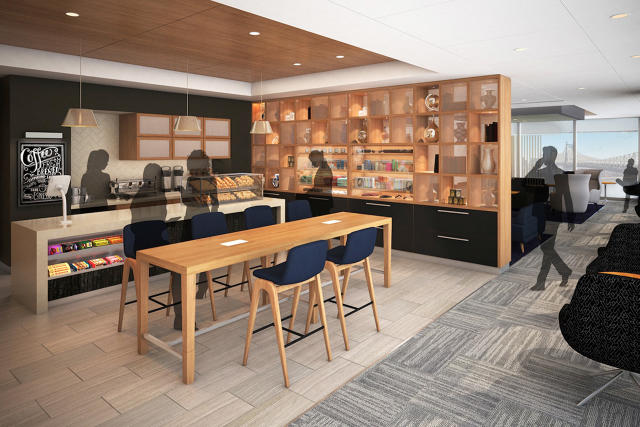
The designers treated the drama of the health center as a cleaning soap opera, seeking to take into accounts where the emotional moments occur. in the doctor’s consultation place of job, as an example, a household can exit the ground without going again to the ready room, just in case they get unhealthy news. usually, in these situations, “everybody waiting appears to look what their expression is like. It’s traumatic,” says Suzen Heeley, the clinic’s govt director of design and construction.
In a technique, JRSC is a clinic considering a little bit like a startup looking to disrupt an current industry model.
“There are a lots of brief-keep or fast monitor programs right here and there. they are on a regular basis achieved in the atmosphere of an existing sanatorium, and it’s just no longer the identical. The food services workforce doesn’t know who’s a quick observe and a typical patient. The nurses may have each types of patients,” says Simon. “no one has designed something from the underside that’s actually focused on doing this.”
With a smaller workforce of surgeons (45 compared to the principle health center’s a hundred thirty surgeons) and a smaller number of kinds of surgical procedures, Simon hopes to get far from the “giant field” health center approach of doing things.
As Ohayon says of the medical institution’s desire for alternate: “whilst you say jump—what do you imply bounce? Some folks want to bounce off the aspect of a highway, some people wish to bounce off a curb. We have been in reality fortunate that we had a group that really wished to look things carried out differently.”
[All Images: ICRAVE unless otherwise indicated]
fast company , learn Full Story
(55)

